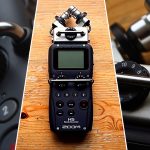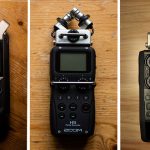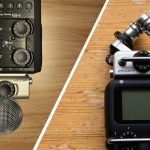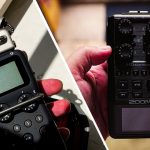After posting my initial review of the Zoom H5 a couple of years back, and interacting with the hundreds of comments and questions, I’ve compiled a new, more complete review. In this article, I’ll not only go over what this handheld recording device can do, and who should buy it, but I’ve included new information, based on commonly asked questions, from you, the community.
So presumably you’ve owned a Zoom H4n Pro for a while now, and you’re looking to upgrade. Maybe you’re thinking about starting a podcast with a friend, and you’re trying to find out what recorder you should buy in order to get started.
No matter what the case may be, in this video we’re going to answer those questions, and more.

Inputs
The Zoom H5 has two XLR inputs, and a 3.5mm stereo mini-jack input. In simple terms, the XLR inputs are for larger microphones, such as the ones used in podcasts, or boom mics, which are used to record dialogue in film, and certain sound effects.
The X/Y mic has a MIC/LINE input jack which can be used to connect an external mic, or line-level device. This jack can also provide plug-in power to mics that need it. This is useful if you need to plug in a lavalier mic for example, in order to record dialogue.
If you have a smartphone lavalier microphone, chances are it has a TRRS plug, which will not work with this recorder. A TRRS to TRS cable adaptor should do the trick though.
If you plan on doing journalism, or recording one on one interviews, which would only require a maximum of two external microphones, the two XLR inputs on the Zoom H5 will be sufficient. However, if you plan on recording a podcast though, bear in mind the two microphone limitation.
If you find yourself in need of more inputs, you might want to have a look at the Zoom H6.
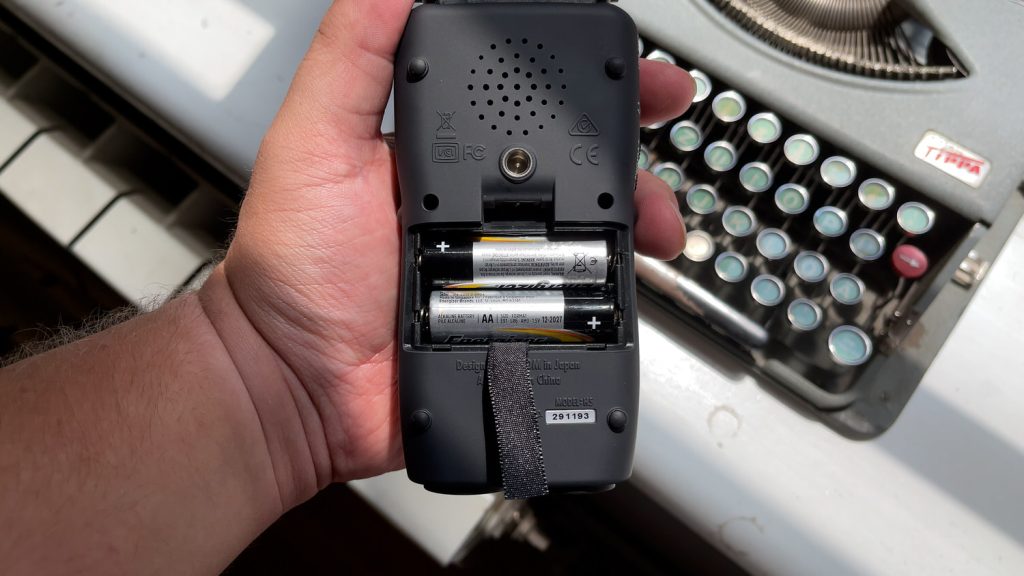
Battery Life
According to Zoom, the H5 should be able to run for about 15 hours. Bear in mind that your mileage may vary, as different variables, such as whether you’re using Phantom Power or not, can affect how long the recorder can go for.
There are many different variables which could potentially affect the battery life of the device, but the important thing is that the H5 can record for hours at a time, and it’s always worth carrying some extra batteries with you, just in case.
Given that the Zoom H5 takes two AA batteries, packing a few extra should be enough, depending on what your plans are.
I haven’t tested this out on the Zoom H5, but a lot of these devices can work off of power banks. Alternatively, you can purchase the APH-5 accessory pack for it. The pack contains a power adaptor and cable, amongst other things, so that you can run the device off of the mains.
Accessories
Speaking of accessories, if you do go ahead and purchase the APH-5 accessory pack, you’ll also get a windscreen, which is quite handy when recording outdoors, and a wired remote.
Size & Build
The actual dimensions for the Zoom H5 are 7.77 x 2.63 x 1.66 inches, and it weighs 9.52 oz (269 grams). Even though it is relatively light, it feels sturdy in the hand, and it looks rather rugged.
You should always treat your equipment with care, but I personally wouldn’t be too worried about roughing this recorder up a bit.
Portability
The Zoom H5 is very portable, and it comes with a plastic case, which is cushioned, and compact. This allows you to safely carry your recorder around, whilst not impeding you if you quickly need to take it out and record.
If you want a soft case for it, you can have a look at the PCH-5.
Free Sound Effects
By the way, did you know I have compiled the largest list of free sound effects in the world? Over 500GB of sounds, ready to be downloaded, free of charge. Just figured you’d want to know. And now, back to the review.
Display
When it comes to its display, the H5 has as a backlit LCD screen. This is great if you’re recording in low light conditions.
If you’re mounting the recorder on a DSLR, the position of the screen could be better. As I’ve said in my Zoom H6 video, manufacturers should start including swivel screens with future iterations of these recorders. This would make them that much more versatile.
Versatility
The versatility that a device such as the Zoom H5 offers is one of the main reasons why you’d choose to buy it, over the Zoom H4n Pro.
Much like the Zoom H6, the H5 has an array of capsules that it can use, which are also cross-compatible with the H6, and the H8. I’ve purchased all the capsules for review purposes, so let’s go through each, and see what they’re good for.
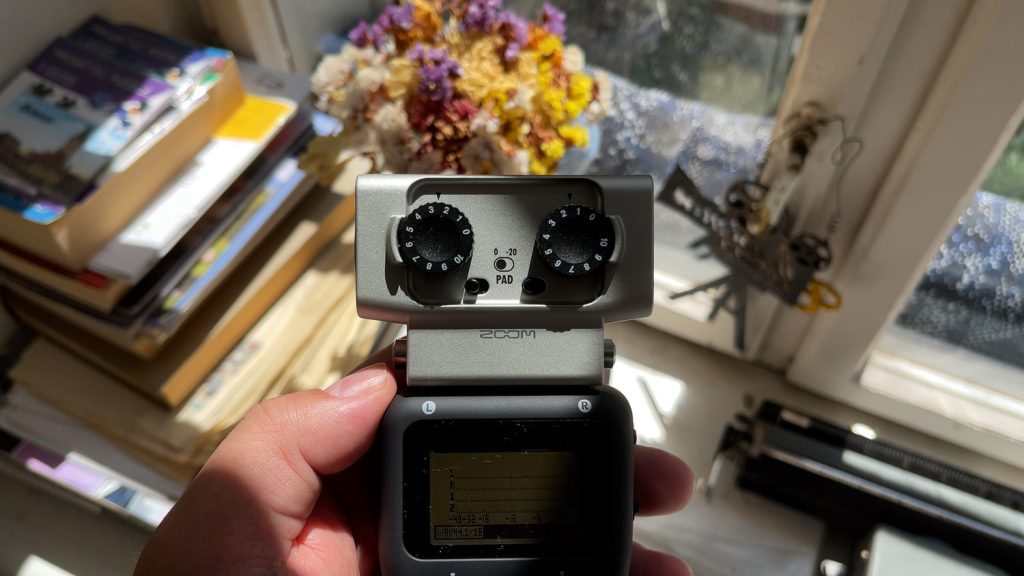
EXH-6 Combo Input Capsule
This capsule allows you to connect two external microphones, instruments, mixers, or portable music players to the Zoom H5. Note that this capsule unfortunately can not provide Phantom Power to the two inputs, somewhat limiting your options of microphones.
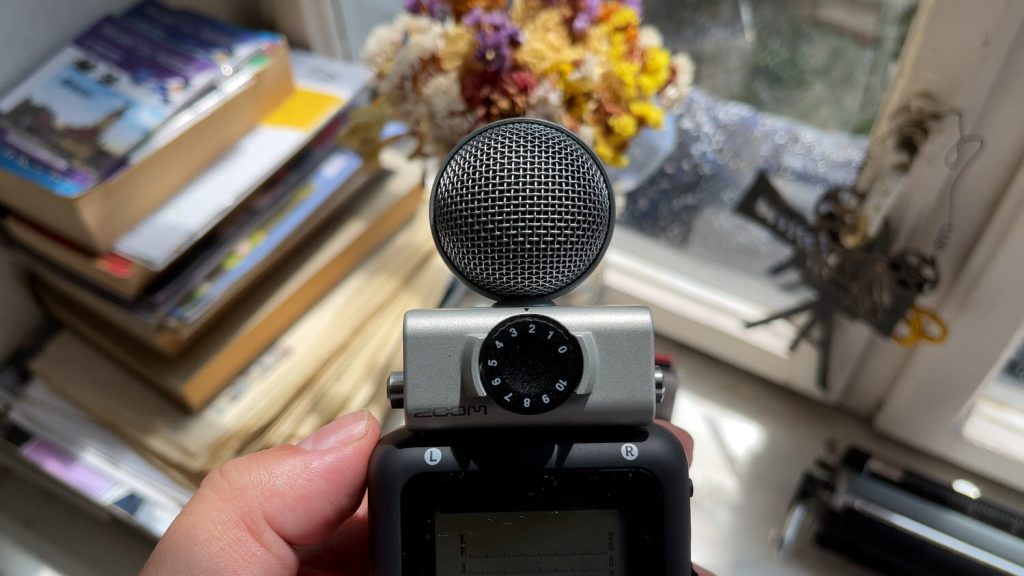
MSH-6 Capsule
The MS in the name stands for Mid-Side recording, which is a technique that allows you to adjust the width of the stereo image after the recording has already taken place. This is useful as it gives you a lot more flexibility in post production.
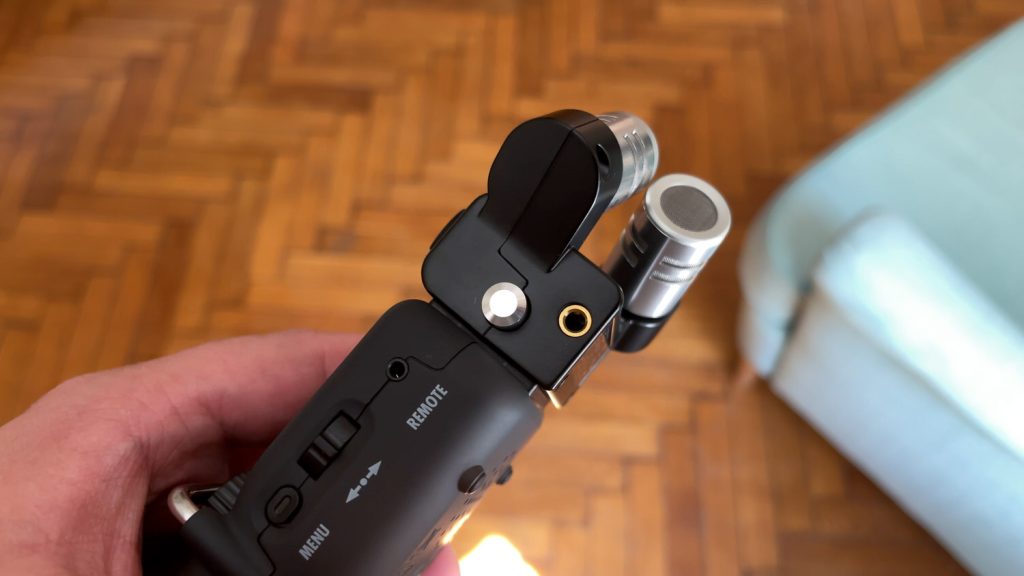
XYH-6 Capsule
This capsule comes by default with the Zoom H6, and adds two matched high-quality unidirectional microphones to your device. The capsule is more sensitive to sound coming from in front of it, then from the sides, or behind it. It is mostly used to record natural ambiences, live performances, instruments, and some sound effects.
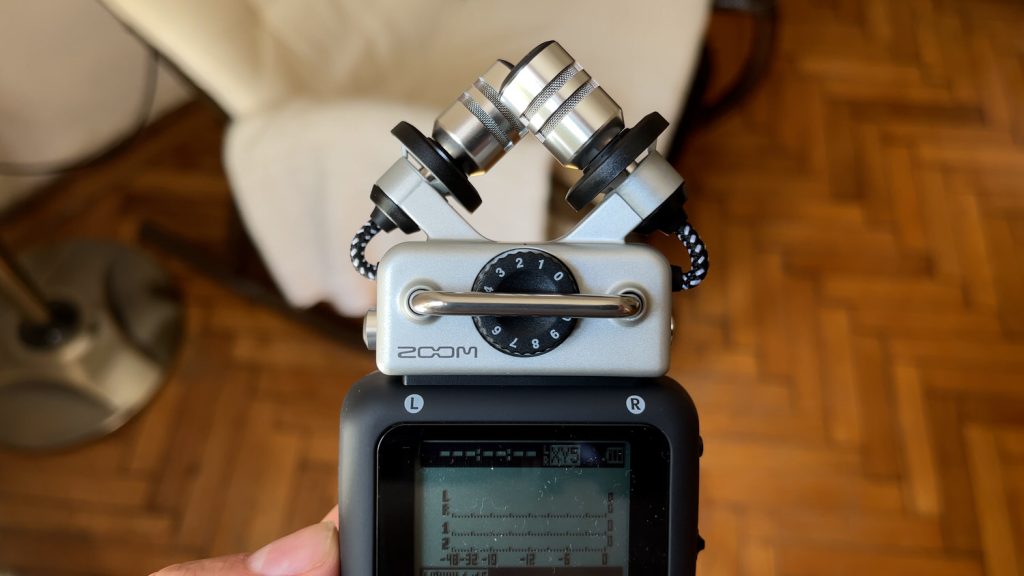
XYH-5 Shock Mount Capsule
This one comes by default with the Zoom H5. It’s similar to the XYH-6 capsule that we looked at earlier, but it has built-in shock-mounts. The purpose of the shock-mount is to minimise vibrations affecting the recording, either from handling the recorder, or from the surface the recorder is placed on.
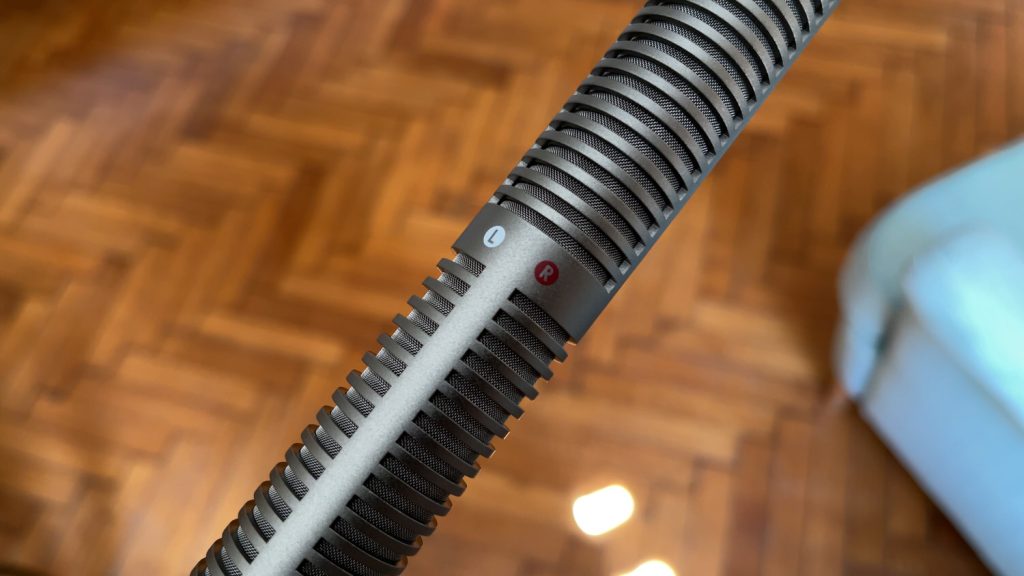
SSH-6 Mid-Side Stereo Shotgun Microphone Capsule
This includes a super-directional microphone which picks up sound in the centre, as well as a bidirectional side mic for picking up sounds from the left and the right.
The advantage of this microphone would be that you can record dialogue with the directional mic, and then mix in as much or as little of the environment as you’d like, which was captured with the bidirectional side mic. This can be done both in post-production, and directly in the Zoom recorder.
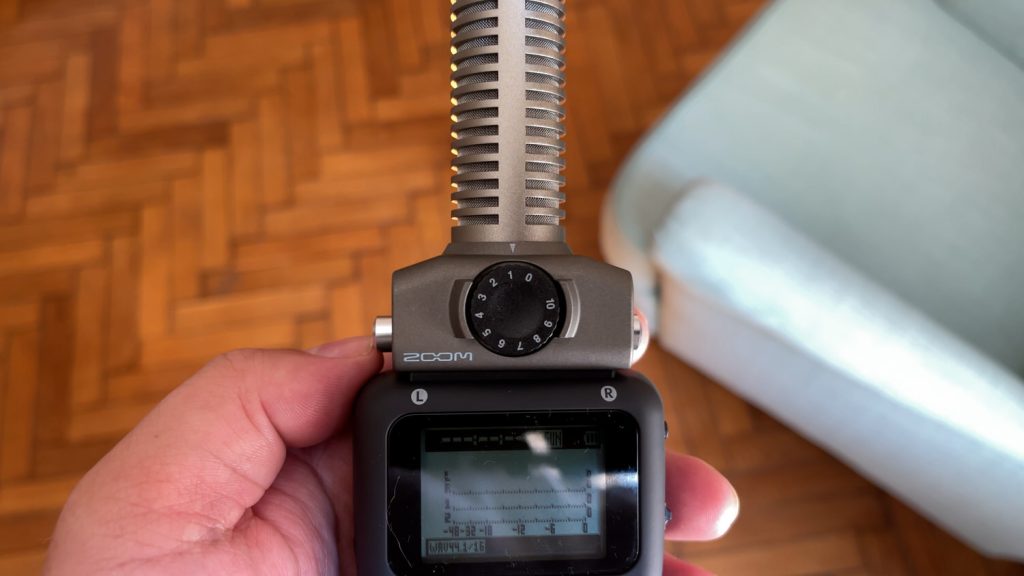
SGH-6 Shotgun Microphone Capsule
Highly directional, it allows you to record focused sound, without having to carry a separate microphone and grip with the recorder. Whilst those can be better, they can also be way more expensive, and burdensome to carry. This is a winning combo if you prefer to have a compact set-up, like I do.
Because of its directionality, it mostly picks up the sounds in front of it, whilst largely ignoring anything coming from the side, or the back.
By the way, the narration for the video at the top of this article was recorded with a Zoom H6, and this capsule. I use a Manfrotto desk stand in conjuncture with them, and the microphone itself is aimed at my mouth, from the side.
The reason is because I like to have the mic quite close to me, and having it on the side prevents plosives.
As a quick side note, one of the benefits of these capsules is that if one stops working, you don’t have to bin the whole unit. Instead, you can just buy a new capsule, and keep using the recording device.
Additionally, Zoom provides you with these plastic tabs, which protect the connection points from dust. As fantastic as they are, I wish there was some built-in slot in the device where I can keep them when using a capsule. As things stand, I’ve been known to lose the plastic tabs.
Voice Overs
As I’ve mentioned before, I’m currently recording my voice overs with the Zoom H6 and the SGH-6. I switched to this, from my older setup which involved a Shure SM7B, a cloud lifter, and a Zoom H8.
The reason is because it’s far more portable, whilst delivering similar quality.
The reason why I chose the SGH-6, over just using the default X/Y capsule that came with it, is because the SGH-6 is a lot more directional.
As a digital nomad, I travel around, and I can’t always know what the acoustics of a place will be when I’m booking it. As a result, I use a highly directional microphone, which will mostly just focus on my voice, and it will ignore the sound reflections coming from the side, and other unwanted noise coming from the back.
You can use the X/Y capsule that comes with this device, but you’ll be capturing a lot more of the room, instead of a more isolated sound. This can be a good or a bad thing, depending on the situation.
-12dB Backup
Next up, I wanted to cover one of the more useful features of this device, and at the same time discuss its unfortunate limitations.
The Zoom H5 has a feature called a -12dB backup. What it does is when recording, it creates a backup of your recording, which is -12dB quieter.
The reason for this is that if you get too loud when recording, and you get distortion, you can go into the -12dB safety track, and replace the distorted clip with the quieter, undistorted version.
This sounds fantastic in theory, but there is an issue. When I first heard about this, my assumption was that this feature could be applied to all four inputs, or at the very least the two built-in ones.
As it turns out, this only applies to the Left and Right channels, so for instance on recordings that you capture with the X/Y capsule. As a result, you can’t do this for a microphone or instrument plugged into any of the four XLR/TRS inputs.
The strange thing about this is that I’ve seen quite a few conflicting opinions online. Some people say that they’ve managed to get backups of XLR microphones, other say that they can’t.
My assumption is that the ones that did get them, used the EXH-6 Combo Input capsule to plug in the XLRs. That might actually work, but that’s a use case that applies to very few people.
This does not affect someone like me, who uses the Zoom H6 in conjuncture with the SGH-6 Shotgun Microphone Capsule, but it would impact someone recording a podcast for example.
I assume this feature is incomplete due to a limitation in processing power. If you know a workaround for this, make sure to leave it down below in the comments.
Setting Levels
Now that we’ve covered safety tracks, I actually want to talk about setting healthy levels, and how to avoid needing a backup track in the first place.
Here is the simplest way I can describe setting levels: Peak as high as you can, without actually clipping. In practical terms, set your levels so that you don’t really peak above -6dB, try to keep the average around -12dB, with softer sounds hitting around -20dB.
You’ll find a lot of debate online as to how you should set your levels, but use the numbers I’ve given you, and play around with your device until you get results that you like.
When in doubt, it’s better to set them too low, than too high. If it’s too high, your recording will be distorted, which will make it unusable. If it’s too low, you’ll get hiss in your recording, but that’s preferable to the alternative.
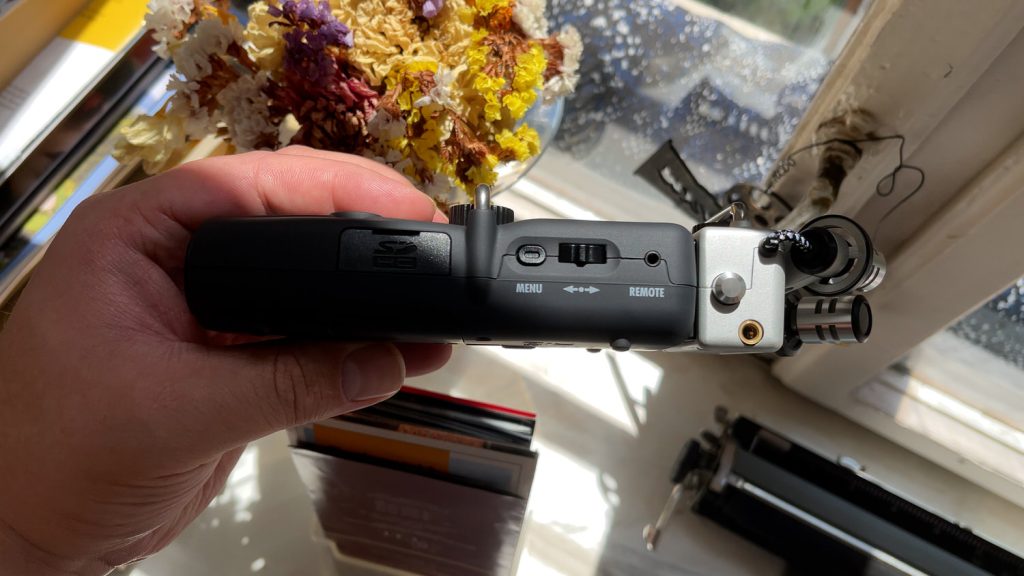
Sample Rate, Bit Depth, and File Type
Let’s talk about sample rates, bit depth, and file types. I’m not only going to run you through which sample rates, bit depths, and file types are supported by the Zoom H5, but I’m also going to tell you which you should use.
First off, you can pick between 16 and 24 bit rate. Not going to go too deep into this one, just go ahead and stick with 24bit.
In terms of file type, always use .WAV files. This will produce a file that is rich in audio information, which is preferable to an .MP3. An .MP3 intentionally excludes some data, which will somewhat degrade the quality of your audio, in the interest of a smaller file size.
The only instance you’d want to use the .MP3 format is if you strictly use your Zoom H5 as a dictaphone. If that’s your use case, then go ahead, but most people looking for dictaphones will usually opt for a smaller, and cheaper device.
When it comes to sample rate, you have a few options. I’m not going to go into the science of it, but you can think of sample rate kind of like frames per second in video.
If you’re just filming someone talking, no need to go beyond 30fps. If you want to be able to slow the footage down though, and not get weird artifacts when doing so, you shoot at 60fps or above. Your choice of sample rate in audio follows a similar logic.
Here are the sample rates you’ll have access to, and what they’re usually used for.
44.1kHz
This is typically used for recording music. There is of course nothing stopping you from recording your music at 48kHz, or 96kHz, but unless you plan on doing some crazy audio manipulation, 44.1kHz will be just fine.
48kHz
This is typically used for audio which will play alongside picture, like dialogue, or a voice over track for a video. It’s a sample rate often considered more ‘pro’, compared to 44.1kHz, which is seen as something aimed more at ‘consumers’.
96kHz
Use this if you’re going to record ambiences, or sound effects which will be used for sound design purposes.
There is nothing stopping you from using any sample rate by the way, but when it comes to specific use cases, some sample rates are more indicated than others.
Audio Interface
The H5 can also be used as an audio interface, with your DAW of choice. All you have to do is go into Menu, select USB, and then Audio Interface. The device then gives you the option of either going via the route of a Stereo Mix, or Multi Track.
Once you’ve done that, you’ll have to select either PC/Mac (Bus Powered) or PC/Mac (Battery). If you computer can’t supply enough power to the device when using Phantom Power, select ‘PC/Mac (Battery)’. This will use some of the battery in the H5 in order to provide Phantom Power.
Sound Quality
In regards to noise, the Zoom H5 has the same preamps as the Zoom H4n Pro, and the Zoom H6. No major differences between the two when it comes to audio quality.
When it comes to preamps, neither of them are as good as the Sony PCM-D100, but more on that later.
Loud ambiences
If your aim is to record super quiet ambiences, the Zoom H5 would not be my first choice. In fact, none of the Zoom handheld recorders would. Instead, I’d go for The Sony PCM-D100. Even though it can record quiet ambiences with minimal hiss, you do not have XLR inputs.
Now, you can connect microphones to it, via the stereo mini jack input, and you can even jerry-rig it to connect XLRs, but at that point, why not invest in a device that has dedicated XLR inputs.
Given the price of the PCM-D100, which has historically been far higher than the Zoom H5, if you really need to connect XLR mics to it, I’d look for entirely other options.
PS: A great potential use for The Sony PCM-D100 would be when recording ASMR, due to its low noise floor.
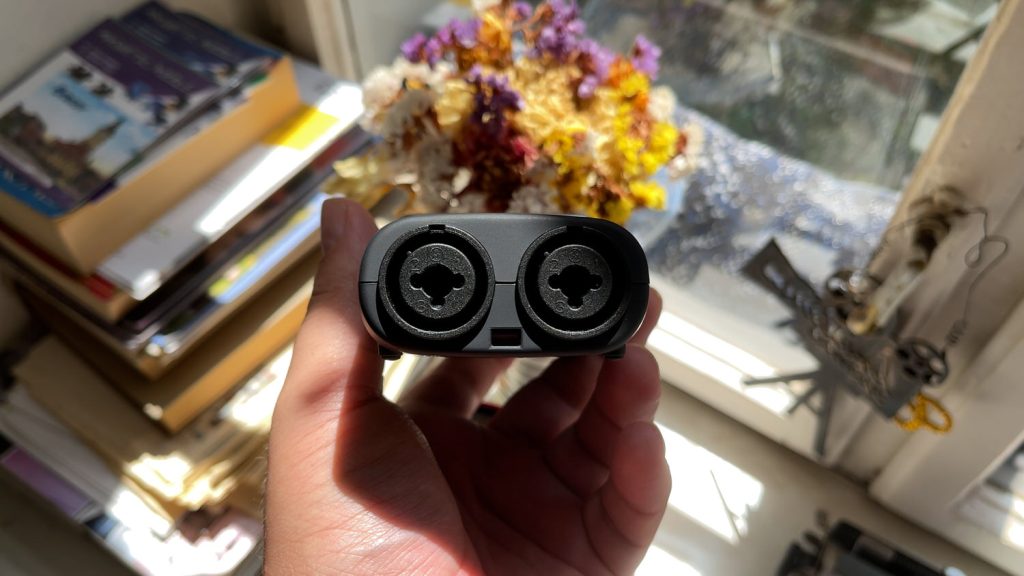
Guitar Effects
The Zoom H5 does not have built-in guitar effects, like the H4n Pro, or the H8, but it does have a built-in tuner.
This is not something that I’ve ever used, as I prefer to record my electric guitar tracks clean, and then add effects later, but this is something that a lot of guitar players might be interested.
Affordability
In terms of affordability, whilst the prices vary depending on where you are, the Zoom H5 remains a relatively affordable portable recording device.
Ease of use
I found the design and menus to be intuitive and easy to use on the Zoom H5. Swapping capsules is also painless and quick to do.
When under time constraints, this is a massive plus. There’s nothing worse than missing a great recording, because you couldn’t figure out the menus, or because navigating them was a pain.
Storage
Whilst the Zoom H5 does not offer any built-in storage, it can record directly to SD and SDHC cards up to 32GB in size. Even if you’re recording at 96kHz, that’s a lot of space for your recordings.
If you’re recording a stereo track, at 24bit/48kHz, 32GB should in theory allow you to record about 2000 minutes, or 33 hours.
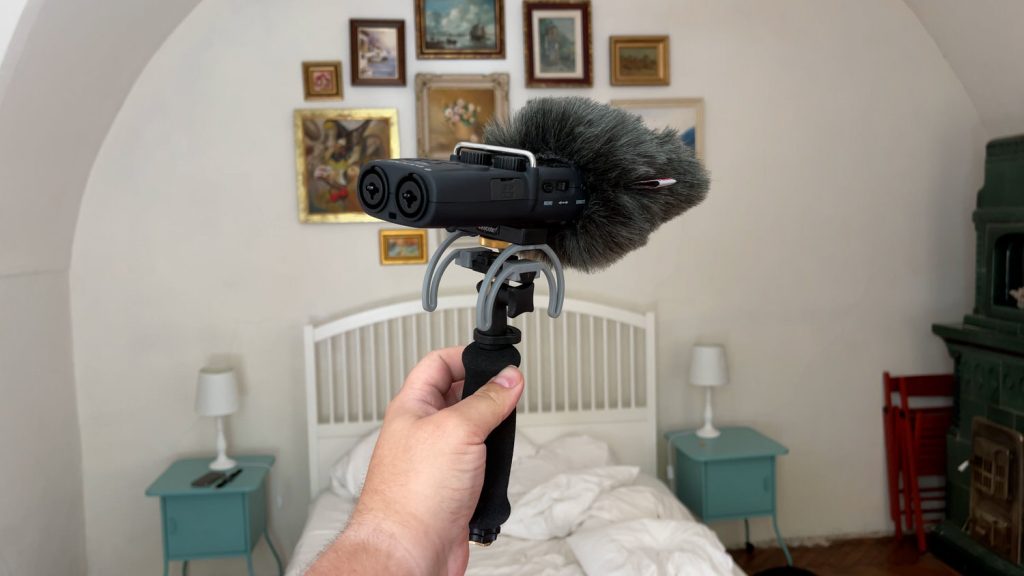
Wind Protection
If you need to record outdoors, which might be the case if you’re a journalist, sound effects recordist, field recordist, sound designer, if you’re recording a live band, or more, the foam windshield that comes with the recorder will prove itself to be rather unhelpful.
It’s ok when recording indoors, but any real gust of wind will make your recording unusable. Luckily, Rycote sells a three-in-one solution for the Zoom H5.
A grip, by which you can hold the recorder, a shock mount which basically eliminates handling noise, and a good quality windshield, which will protect the microphone from wind, though very strong winds might still affect the microphone.
Known Issue
A known issue with the Zoom H5 that some people have reported is that after a while, the rubber casing becomes sticky. With that in mind, I have been able to find videos online showing you how to deal with this problem.
The reason why I’m not pointing you to any one of them specifically, is that I don’t know if they work, as I’ve never had this issue with my Zoom H5.
Luckily, the rubber casing becoming sticky does not seem to be a widespread problem.
Level Protection
The Zoom H5 has a metal bar across it, which makes it difficult, if not impossible to accidentally change the input levels. I like this, as there is a physical barrier preventing me from accidentally changing the settings, which could happen on other recorders.
If you know you’re likely to accidentally hit, or run your hand over the recorder and thus change the levels, this might be something to take into consideration.
Noise
Whilst Zoom handheld recorder preamps tend to not be seen in a positive light online, its noise levels are more than suitable for most people.
For instance, if you want to record something really quiet, like very light rain in a quiet forest, or ASMR, you’ll get noticeable hiss in your recordings.
This is due to the preamps, and all recording devices have some measure of hiss. I’ve mentioned the Sony PCM-D100 earlier, which is more suitable for this use.
But, if you want to record louder things, such as musical instruments, live concerts, dialogue, narration, a podcast, and louder sound effects, the Zoom H5 will do just fine.
As I’ve mentioned before, the narration for the video at the top of the article was recorded on the Zoom H6, which has the same preamps.
Conclusion
So, should you buy it? The Zoom H5 is modular, rugged, and versatile, with great sound quality and dual XLR/TRS inputs. If that’s all you need, the Zoom H5 would be a great investment.
That being said, if you think you might one day need to plug in a few extra microphones, it’s worth spending a little bit of extra money and getting the Zoom H6.
If you’d like to see a comparison between the Zoom H5, and the other Zoom hand-held recorders, you can find a link down below in the description.
Thank you for reading my review of the Zoom H5. I invite you to have a look at some of my other articles. We have something for everyone, whether you’re interested in audio, or cameras and lenses. Alternatively, if you prefer video reviews, feel free to have a look at my YouTube channel.
Product Links
Down below you will find all of the items I talked about in this article.
